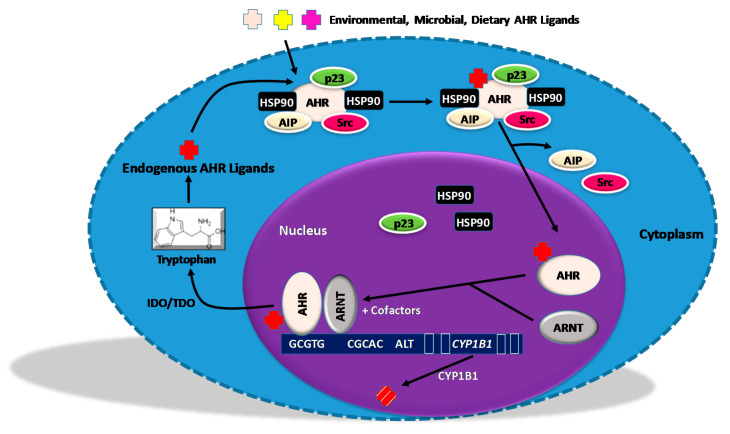Figure 1.
The Transcriptional AHR Signaling Pathway. Cytoplasmic aryl hydrocarbon receptor (AHR) exists in a complex with HSP90, Immunophilin-like Ah Receptor-interacting Protein (AIP), p23, and Src 40. Once engaged with exogenous or endogenous ligands, the AHR sheds AIP and Src and translocates to the nucleus. In the nucleus the AHR dimerizes with the Aryl Hydrocarbon Nuclear Translocator (ARNT), binds to consensus Aryl Hydrocarbon Response Elements (AHREs), recruits coactivators, and transactivates a battery of genes including the hydroxylases CYP1B1 and CYP1A1, which metabolize some environmental AHR ligands into mutagenic epoxide intermediates. (Alternative AHR complexes containing NF-κB subunits, KLF6, or potentially other proteins bind to hybrid (AHRE/NFκB sites) or alternative DNA sequences to activate different sets of AHR responsive genes). CYP1B1 degrades at least some endogenous and exogenous AHR ligands in a negative feedback loop. The AHR complex can also induce IDO1/2 and/or TDO dioxygenases, which metabolize tryptophan into endogenous AHR ligands including, but not limited to, Kyn (kynurenine), in a positive feedback loop (see Section 5). Distinct sets of genes are activated by different AHR ligands, likely a result of differential co-factor recruitment. The AHR also functions through non-transcriptional pathways not represented here.

